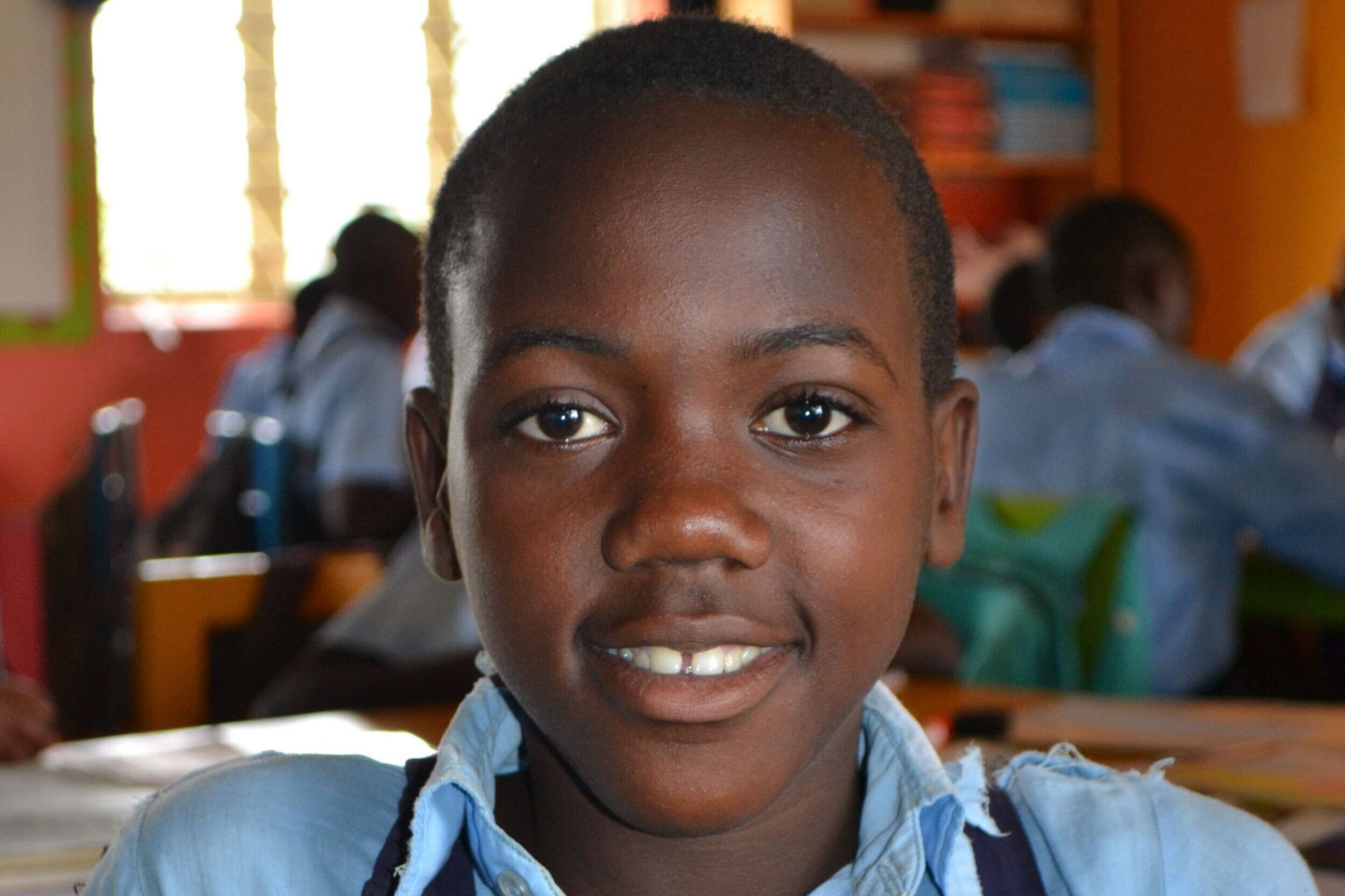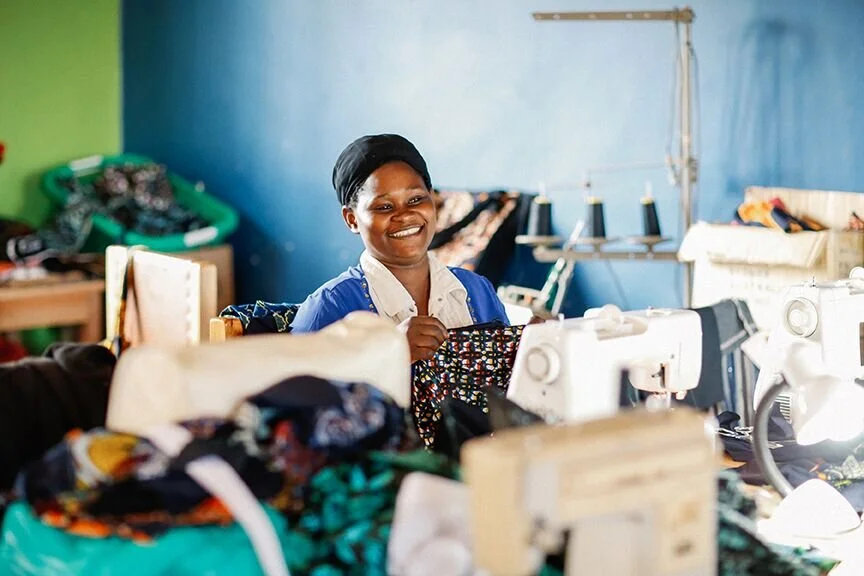By Ashley Meek, School for Life Project Manager
I have travelled to East Africa countless times throughout my career. Each time I prepare to depart, well intentioned Canadians approach me and ask what they can donate to the projects I work at. "What can I send for the kids?", they ask eagerly, "Do they need pencils, crayons, clothing? I bet they don't have any toys…". At times I've even been presented at the last minute with heaping packages of books, stickers and clothing by enthusiastic friends and family wanting to make a contribution.
As I sit in the library in Katuuso Primary School, unpacking boxes of donations that get sent from all over the world, I can't help but be annoyed when I come across completely irrelevant books such as 'How to Use a Microwave' or a summary of Australia's Top 10 Cricket Players from 1985. I am further incensed when I think about the discrepancy between these donations and the real needs of schools in Uganda.
People overseas are not the only ones with misguided efforts, however. Recently, the U.S. Ambassador to Uganda commissioned the distribution of 1.5 million textbooks and teacher instructional guides to more than 5,000 Ugandan schools. While relevant literature and instructional materials that align with the national curriculum will certainly support under-resourced schools and improve literacy outcomes, what Uganda urgently needs, above all, is more skilled teachers.
Since the introduction of Universal Primary Education in 1997, as part of a national policy to provide free primary education for underprivileged children, enrollment has increased from 3.1 million pupils to 8.4 million (The Guardian, 2015). Unfortunately, this hasty declaration of universal access to primary education in Uganda was not met with the government funding or infrastructure to support it. The education system is consequently overburdened, trying to deliver lessons to more than double the number of students, with the same operating budget.
The majority of government schools are now overpopulated (the average teacher to student ratio is 1:52), and under-resourced, ultimately eroding the quality of education that children are receiving. Consequently, 70% of children enrolled in Uganda's schools are dropping out before completing the prescribed 7 years and only 35% of secondary students make it to university (Huffington Post, 2016). Years of research and expert opinions resoundingly point to poor quality education as the cause of these high dropout rates. Notwithstanding the lack of desks, learning materials and resources, the shortage of qualified teachers remains one of the most profound obstacles.
"Only one in five of Uganda’s primary school teachers meets the minimum standards of proficiency in numeracy, literacy and pedagogy, and approximately two out of four teachers are absent from class daily. Among those present in school in 2015, 56% were not in the classroom during scheduled teaching hours, and 84% of teachers in Uganda report wanting to quit their job" (Huffington Post, 2016).
A 2009 study by the Uganda Economic Policy Research Centre found that the two most important determinants of learning outcomes in primary school were; 1) That a child had a desk at which to sit, and 2) That teachers had at least two years of teacher training (Determinants of Learning Achievements in Uganda).
At School for Life, teachers are our most valuable resources. Indeed, it is more effective to have a great teacher giving lessons under a mango tree, than an unmotivated or poorly trained teacher in a fully equipped classroom. Of course, the learning environment is enhanced by child-friendly classrooms, sufficient desk space, relevant resources and learning aids, but highly qualified and motivated teachers are the top priority. They are the key to a child's motivation to learn and the determinant of education outcomes, more than any of the above factors combined. Therefore, we do everything we can to ensure the hiring, retention and up-skilling of exceptional teachers.
Here's how:
#1. Good Working Conditions and a Supportive Environment:
All of our teachers are fully certified with a minimum of a two-year teaching certificate, as opposed to many government schools where some have barely completed secondary education. We provide good working conditions and comfortable living accommodations to attract well-trained, experienced teachers to our rural schools. Further, we ensure that the teacher to student ratio does not exceed 1:20 and that teachers have the support they need to do their jobs well and stay inspired. Since the opening of the school in 2011, we have maintained a 95% teacher retention rate.
#2. Professional Development Opportunities
SFL teachers are lifelong learners. Our staff are always eager to acquire new techniques to maximize student engagement and optimize performance. School For Life offers in-service workshops three times a year on trending education topics such as active learning, student-centered teaching, positive reinforcement and behavior management. We further endorse teachers' participation in conferences and trainings held in the region and support individuals in upgrading and continuing education. Currently, 2 of our teachers are enrolled in specialized training diplomas in Primary Education and our head teacher has just begun a course in Administration & Management.
The Primary Education diploma is designed to train teachers to incorporate contemporary teaching strategies into three subject areas, as well as how to take holistic approach to understanding children's behavior for improved classroom management. Primary Two Teacher, Annet, says; "I love to study. I want to continue to evolve as a teacher and not get stuck in old fashioned methods. This diploma will provide me with opportunities to grow.”
The two-year Administration & Management course, being pursued by Head Teacher Robert Kasio, specializes in equipping education administrators with the knowledge and technical skills to mentor staff and improve the student experience. This diploma will enhance our Head Teacher's abilities to support and advise the teachers he will be leading. It will give him the skills to critically evaluate current testing systems, provide individualized classroom programming and the capacity to increase parental engagement.
These up-skilling opportunities have only been made possible through our teacher sponsorship program, whereby generous donors contribute to the cost of tuition fees and required materials.
#3. Identifying and Training Local Educators
Grace became involved with School for Life in 2015 while offering support as a teacher’s aid. Assisting the teachers in Pre-Primary with 3-5year olds, it quickly became apparent that Grace possessed very strong teaching and interpersonal skills. Her kind and energetic nature, love for children and desire to perpetuate knowledge made her an ideal candidate for an SFL teacher, but she lacked a certificate.
Grace previously spent 2 years teaching (without any formalized training) in a local primary school. She was very excited to hear about the possibilities in Katuuso and became determined to be a part of the team. She feels she was “destined to become a teacher" and has been "praying for the opportunity of sponsorship” to advance her education. Last year, Grace received news that SFL had secured a sponsor for her Early Childhood Development Course. She shrieked with glee and burst into tears when we told her!
This training will vastly improve her ability to teach through the acquisition of proven techniques and understanding of early years development. “Through my learning, the children will learn,” says Grace excitedly about her course.
Hold the books…!
The dedication, standards and child-centered approaches demonstrated by the teachers at School for Life greatly surpasses every other public school I have seen in Africa. I have also seen the growth and transformation of our team, through progressive trainings and continuing education courses in my last 1.5 years of working with SFL.
Now, when people approach me with material donations, I make alternative suggestions for contributing to the sustainability and quality of a well-run operation like School for Life. Whether it be financing steady teacher salaries, accommodations, resources and ongoing trainings, or sponsoring a specialized diploma, the biggest return on your investment when it comes to quality education --- is a quality teacher.









